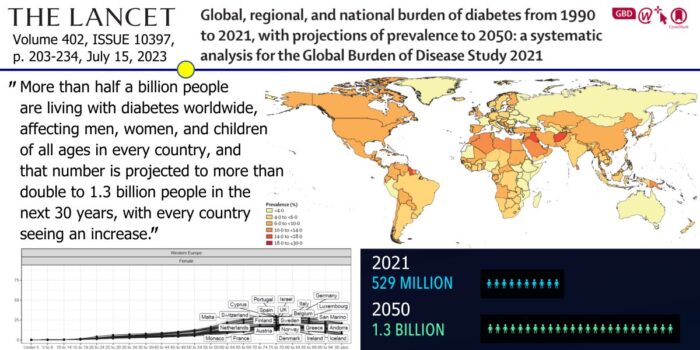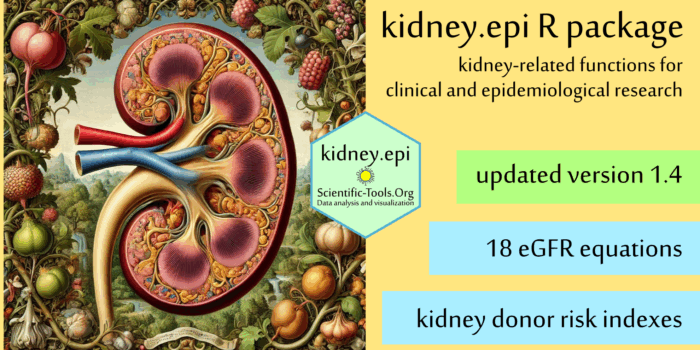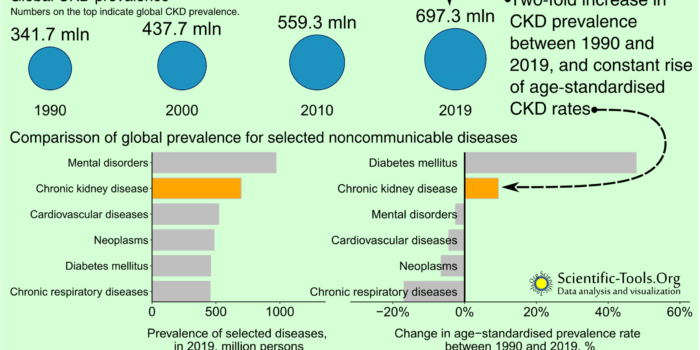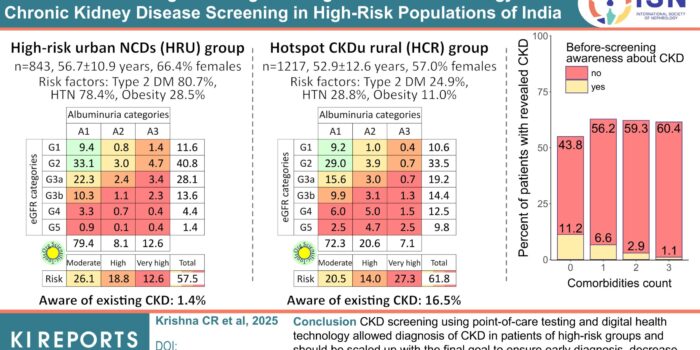June 3, 2025 The updated 1.4.0 release of the kidney.epi R package — a curated…

July 20, 2023
Scientific-Tools.Org staff actively contribute to the Global Burden of Disease (GBD) Study, including the recently published Lancet paper “Global, regional, and national burden of diabetes from 1990 to 2021, with projections of prevalence to 2050: a systematic analysis for the Global Burden of Disease Study 2021“. We have a privilege to provide the expertise and become co-authors of this outstanding analysis, together with hundreds of prominent researchers all over the world who are eager to reveal the disease burden at the country and global levels.
Diabetes is one of the leading causes of death and disability worldwide, and the analytical framework of the GBD Study produced location-specific, age-specific, and sex-specific estimates of diabetes prevalence and burden from 1990 to 2021, the proportion of type 1 and type 2 diabetes in 2021, the proportion of the type 2 diabetes burden attributable to selected risk factors, and projections of diabetes prevalence through 2050.
Our paper shows that in 2021, there were 529 million (95% uncertainty interval [UI] 500–564) people living with diabetes worldwide, and that number is projected to more than double to 1.3 billion (95% UI 1.22–1.39) people in the next 30 years, with every country seeing an increase. By 2050, 89 (43.6%) of 204 countries and territories will have an increase in age-standardised diabetes prevalence rate greater than 10%. The most affected regions are expected to show an increase in age-standardised diabetes prevalence rate by 16·8% (16·1–17·6) in north Africa and the Middle East and 11·3% (10·8–11·9) in Latin America and Caribbean.
Of note, type 2 diabetes, which makes up the bulk of diabetes cases, is largely preventable and, in some cases, potentially reversible if identified and managed early in the disease course. However, all evidence indicates that diabetes prevalence is increasing worldwide, primarily due to a rise in obesity caused by multiple factors. Preventing and controlling type 2 diabetes remains an ongoing challenge. Together with a large scientific community, Scientific-Tools.Org will continue to evaluate the burden of diabetes and other noncommunicable diseases – with the major aim to provide an instrument to control the disease burden and improve health in each of the world’s countries.
Image: The Lancet, the Institute for Health Metrics and Evaluation, with modification.




Comments (0)